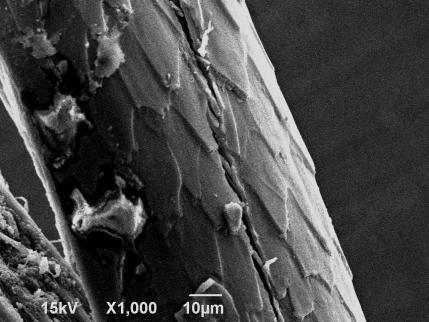This question is something that has plagued people for all of eternity, and despite the thousands of questions one could ask of the philosophical nature, we are asking this question in a very literal form. For as long as there have been people, there have been beards. Facial hair is as old as the human race itself, and is among the few remaining features that can be related back to our ancestral, primate roots. This article is the first of “The Beard Series” in which I will be talking about beards, their history, their contributions to science, and their purpose today. So without further adieu, let us begin.
First, let me explain why we are talking about beards. This doesn’t seem like a very inclusive subject, and I have assured many people that this is not just a blog about beards, but I never said I wouldn’t mention them. I recently had a very moving experience. I was able to take a sample of my beard and view it under an electron microscope. In my opinion, this may be one of the coolest things that has ever happened to me in my young life, and it made me start thinking about what it means to have a beard on my face.

This strand of beard hair was collected from the face of subject Jeremy Houser, and analyzed on 11-06-2014 using a scanning electron microscope.
As you can see from this picture produced by a scanning electron microscope, a beard hair is actually much more complex than it looks. On the exterior of the hair there are tiny scales that make up the cuticle. If you look towards the bottom left of the image where the strand is split open, you can see that the interior is made up of strands which are called the cortex. At the very center of the hair there is a space called the medulla (not clearly pictured). In most men, beard hairs are much more coarse than normal hair, and mine measures around 100 micrometers in diameter (that is about 0.1 millimeters, as compared to the average human hair which is around 0.01 to 0.02 mm). Every hair you have is made of the protein keratin, which is densely coiled and formed into long strands.
On average, beard hair grows at around 1/2 inch per month. For some people it is much faster, others much slower, and it depends mainly on diet, exercise, skin health, and overall body nutrition. There are many commercial products out there to make beards grow faster, but in reality there isn’t much a person can do. Beard vitamins, growth creams, beard workouts, even facial massage techniques, they all claim to assist in beard growth, but in the end your genetics and your lifestyle will largely determine how your beard grows.
In my next post, I will talk about the evolutionary back-story behind beards, where they came from, why men have them, and what might happen to them in the future. Until next time, be sure to subscribe to updates from my blog, like us on Facebook, and follow us on Twitter!
